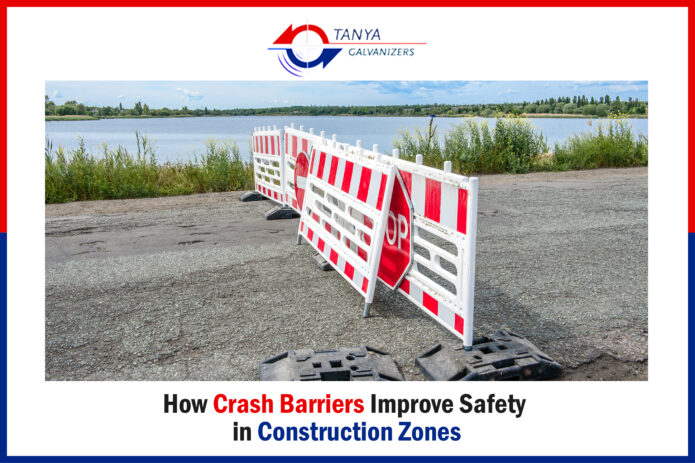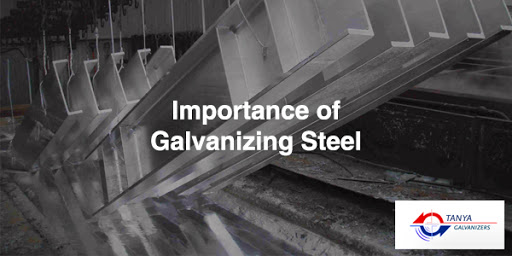What is a Crash Barrier?
Crash barrier are engineered safety structures that prevent vehicles from veering off the road or colliding with dangerous obstacles. These barriers are a critical line of defense, keeping cars on course and providing controlled redirection during accidents. Used extensively along highways, bridges, and construction zones, crash barriers protect motorists from hazards like steep slopes, water bodies, and oncoming traffic. By absorbing and redirecting impact energy, crash barriers minimize the risk of severe accidents, safeguarding drivers and roadside structures.
Galvanizing of Crash Barriers
Galvanizing crash barrier involves coating them with zinc to enhance their durability and corrosion resistance. Since outdoor elements like moisture, temperature fluctuations, and pollutants constantly expose crash barriers, galvanizing offers a protective layer that shields the underlying steel from rust and degradation. Hot-dip galvanizing is the preferred method, as it ensures a robust bond between the steel and zinc coating, which is essential for long-lasting, low-maintenance barriers. Galvanized crash barriers withstand extreme weather conditions and maintain structural integrity over time, offering reliable protection across various terrains.
Types of Crash Barrier
Crash barrier come in various designs, each suited to specific applications and environments:
1. Roadside Barrier
Roadside barriers are placed along roadway edges to prevent vehicles from colliding with obstacles or leaving the road. These Crash barriers are beneficial in areas with nearby slopes, water bodies, or other dangerous obstructions.
2. Median Barrier
Median barriers are located along the center of highways to separate opposing traffic lanes. Engineers specially designed these crash barriers to absorb and dissipate impact energy, which reduces the likelihood of crossover collisions and prevents vehicles from crossing into oncoming lanes.
3.Bridge Barrier
Bridge barriers are positioned along the edges of bridges to protect vehicles and pedestrians from falling off. They are typically taller than standard roadside barriers and engineered to withstand higher impact forces, preventing cars, trucks, and cyclists from crossing over into dangerous areas below.
4.Work Zone Barrier
Workers install temporary structures called work zone barriers to safeguard construction sites and redirect traffic. They can consist of concrete, plastic, or metal and are often modular for easy relocation. Work zone barriers are vital in reducing accidents in high-risk areas where workers and moving machinery are present.
5.Flexible Barrier
Flexible barriers like cable are designed to flex when impacted, absorbing kinetic energy over a longer distance. This crash barriers prevents light vehicles from going off-road, making it suitable for low-speed zones and areas requiring minimal visual obstruction.
6.Rigid Barrier
Rigid crash barriers, usually reinforced concrete, do not absorb impact energy. Instead, they are intended to redirect vehicles away from hazards. While these barriers offer maximum containment, they are less forgiving than flexible options, making them suitable for locations where space constraints limit barrier placement options.
Role of Crash Barriers in Protecting Construction Sites
Crash barrier are integral to construction site safety, serving multiple roles in minimizing accidents and ensuring smooth traffic flow. Construction sites, especially those near roads, are high-risk zones where workers and motorists need protection from potential hazards. As a physical shield, crash barrier create a safe boundary that separates construction activities from moving traffic, reducing the likelihood of worksite intrusions and vehicle collisions.
Conclusion
Crash barrier are vital in enhancing road safety and protecting construction sites. Galvanized crash barrier benefit from improved durability and corrosion resistance, making them suitable for various terrains and weather conditions. Whether you need roadside, bridge, or work zone barriers, investing in high-quality, galvanized solutions is essential to ensure optimal safety and longevity.
Tanya Galvanizers is a trusted provider of galvanizing services for crash barriers, delivering reliable solutions tailored to diverse needs. Connect with us today if you’re looking for durable and practical crash barriers for your crash barrier construction project or roadway. We offer top-notch galvanizing services to enhance the lifespan and resilience of your crash barriers. Contact Tanya Galvanizers for all your crash barrier secure a safer environment for drivers and workers alike.










